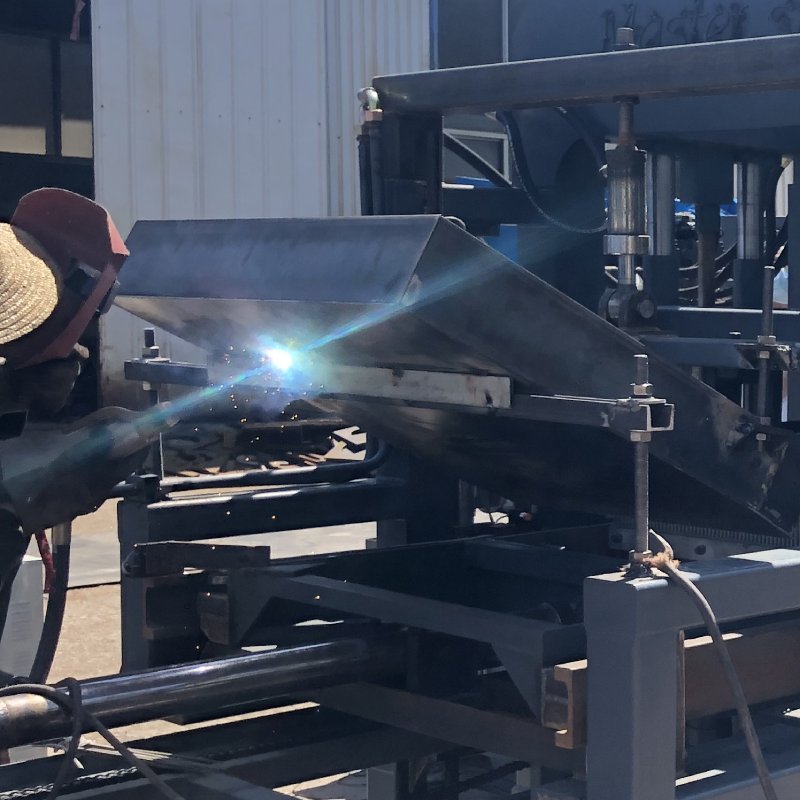
Image source:Aiwei block machine
Introduction
The construction industry has witnessed significant advancements in technology over the years, and brick making machines are no exception. These machines have evolved to become more efficient, reliable, and capable of producing high-quality bricks. Behind these advancements lies the crucial role of research and development (R&D) in driving innovation and pushing the boundaries of brick making machine technology. This article aims to explore the significance of R&D in advancing brick making machine technology and its impact on the construction industry.
Innovation and Design Improvement
Research and development activities play a vital role in fostering innovation and design improvement in brick making machines. Through R&D efforts, manufacturers can explore new concepts, technologies, and materials that can enhance the performance, efficiency, and functionality of these machines. Innovative designs can lead to higher production capacities, improved automation, and increased versatility, allowing brick making machines to cater to a wider range of construction requirements.
R&D also enables the development of specialized features and functionalities tailored to specific needs. For instance, the integration of digital controls, sensors, and automation technologies can enhance the precision, consistency, and reliability of the brick making process. Innovations in machine design can result in improved user-friendliness, ease of maintenance, and safety features, making the machines more practical and efficient for operators.
Optimization of Production Processes
The continuous advancement of brick making machine technology through R&D contributes to the optimization of production processes. Through systematic research and experimentation, manufacturers can identify bottlenecks, inefficiencies, and areas for improvement in the brick manufacturing process. This allows them to develop solutions and implement enhancements that streamline operations, increase productivity, and reduce costs.
R&D efforts can focus on optimizing various aspects of the production process, including raw material preparation, mixing, molding, curing, drying, and quality control. For example, advancements in automation and robotics can result in more precise and consistent brick production, reducing waste and improving overall product quality. Additionally, the integration of intelligent monitoring systems can provide real-time data on machine performance, allowing for proactive maintenance and minimizing downtime.
Quality Enhancement and Performance Standards
Research and development activities play a critical role in enhancing the quality and performance standards of bricks produced by these machines. R&D helps manufacturers identify the key factors that influence the quality and durability of bricks and develop technologies to address them. By conducting rigorous testing, analyzing data, and studying the behavior of different materials, R&D teams can optimize the composition, compaction, curing, and drying processes to achieve superior brick quality.
Advanced testing methods and quality control measures are also developed through R&D efforts. This ensures that bricks produced by the machines meet or exceed industry standards and specifications. Through the integration of advanced sensors, monitoring systems, and quality assurance protocols, manufacturers can detect and rectify defects or deviations in real-time, ensuring consistent and reliable brick production.
Environmental Sustainability
Research and development efforts in brick making machine technology are increasingly focused on environmental sustainability. Sustainable construction practices are gaining importance, and brick production is no exception. R&D plays a crucial role in developing technologies that minimize energy consumption, reduce emissions, and optimize the use of raw materials.
Efforts are being made to develop brick making machines that utilize recycled materials or industrial by-products, such as fly ash or slag. These machines reduce waste and minimize the environmental impact associated with traditional brick manufacturing processes. Furthermore, R&D activities are directed towards improving the energy efficiency of the machines, incorporating renewable energy sources, and developing eco-friendly curing and drying methods.
Technological Adaptation and Market Trends
Research and development activities also enable manufacturers to adapt to changing technological trends and market demands. R&D teams closely monitor the evolving needs and requirements of the construction industry and work towards developing solutions that address emerging challenges and opportunities.
For example, the increasing demand for sustainable and energy-efficient construction has prompted R&D efforts to develop brick making machines that align with these market trends. Similarly, advancements in digitalization, data analytics, and connectivity have led to the integration of smart technologies in brick making machines, allowing for real-time monitoring, remote operation, and predictive maintenance.
Conclusion
The role of research and development in advancing brick making machine technology is paramount. Through innovation, design improvement, optimization of production processes, quality enhancement, environmental sustainability, and adaptation to market trends, R&D drives the evolution of these machines. Manufacturers invest significant resources in R&D to push the boundaries of brick making machine technology, resulting in more efficient, reliable, and sustainable solutions for the construction industry. As R&D efforts continue to progress, we can expect further advancements in brick making machine technology, leading to improved construction practices and the construction of high-quality and durable structures.
